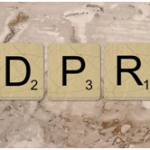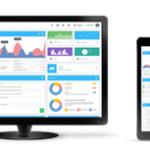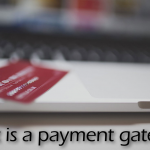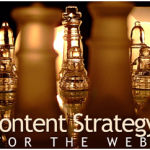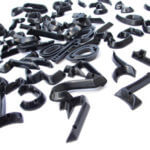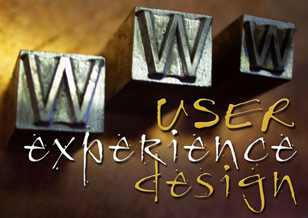
There was a time, not too long ago, when websites were simple text-based pages focused on information dispensed in the form of text. For the most part, the web was used for scientific reports, government bodies and the likes. Improvements in broadband speed, greater penetration of the web, improvements in web technologies and convergence of the web and telecommunications have combined to make the internet the go-to place for everything from information to shopping to social interactions.
This explosion of the web has provided tremendous choices for the internet consumer and has increased the competition between websites vying for attention and engagement with their target audiences. While the value proposition offered by these websites continues to be the primary differentiator and deciding factor for visitors, the “experience” that a site offers is becoming an increasingly decisive factor.
Gone are the days when looking cool or having a fancy animation was enough to make your website appear good. Today, user experience is influenced by much more than mere website aesthetics. User experience design has emerged as a specialization that is rapidly growing in demand.
What is website user experience design?
The term user experience design — also called UXD or UED — broadly includes all aspects of a visitor’s experience on a website. This is inclusive of things like user interface, graphics used on the site, interactivity and interaction touch points, etc.
Today, website user experience design also includes the design practices that are data-driven and testing-based — aimed at a holistic analysis and enhancement of all aspects of a visitor’s experience on a website.
Elements of user experience design
As mentioned above, user experience design is not just about the aesthetics of a website. It includes many more aspects that go into the creation of a great user experience. Some of the elements of website user experience design include:
Information Architecture
All website design begins with the information architecture of the website. Few realize the role information architecture plays in user experience design. Designing the information architecture of a website based on how potential visitors would prefer to navigate it and consume its content is an integral part of user experience design. For example, should you have links on your website called “products” and “services”? Do your target visitors actually search for terms like “products” and “services”? Should you instead group them by target segment like “Enterprise solutions” and “SMB solutions” or “B2B solutions” and “B2C solutions”? Or should you actually list the names of the products and services in your links? As the owner of the website, you may have preferences of your own about the navigation. User experience design eliminates the personal preferences and bias of stake holders, and takes a data-based approach in architecting the website based on the most intuitive navigation for your potential visitors.
Branding Services
The visual elements of a website form the next part of the user experience design. This includes site aesthetics, arrangement of elements on a web page, colors, typography, etc. Here too, while owners of a website may have their personal preferences, user experience design takes into account the preferences of the target visitors in determining what a website should look like. Graphic design of a website is also called visual design or user interface design. It determines the look and feel of a website and what visitors see when they land on your website.
Interaction Design
The next element of user experience design is interaction design. This includes creating touch-points for visitors to the website to interact with the website. Interaction with a visitor does not always need to be a transaction or submission of an inquiry form. Today, interaction can be in many other forms including: subscription to a newsletter, downloading of a file, signing up for a membership, creating a profile, liking the website’s social media profile page, sharing content from the website on social media, etc. Having all forms of interaction is not always a good idea. Too many options can confuse a visitor. Balancing the interaction elements based on the strengths of a website and what the target audience would find useful is the starting point. Interaction design also includes presenting these interaction elements in such a way that they complement one another, anticipate what a visitor might do on a given page or a position on a page, and maximize the visitor’s engagement by placing the interaction elements where they would have the most impact.
Usability Design
Usability design is often confused with interaction design but is not always the same — though it can be in some cases. Usability is more than interaction. It includes consumption of content, navigation from one page to another, etc. It also includes deciding on the format in which content should be presented (text, video, images, etc) and how it should co-exist (how it is cross-promoted on relevant pages, how related content is presented, etc. The aim of usability design is slightly different from that of interaction design. While interaction design tries to maximize the interaction of a visitor with a website, usability design recognizes that not every visitor may want to interact. For these visitors, usability design tries to maximize the use of the website by encouraging the visitor to consume more of its content in a creative manner that encourages the desired behavior from the target audience.
In conclusion
As you can see, there’s more to user experience design than merely creating a good looking website. When you create a website, the whole purpose of the website could be defeated if the visitors didn’t like the experience your website provides them. With growing competition, can you really afford to leave engagement with your target audience to chance? Now more than ever it is important to work with professionals experienced in designing website user experiences that deliver results.
Professional Web Design Services from Flying Cow Design
Flying Cow Design has a track record of over 20 years of professional web design. What differentiates us from most web design companies is that our focus is not only on web design, but on building a strong online presence for our clients. Understanding the changing web development standards and search engine guidelines has helped us build a strong web presence for many of our clients through a combination of our web design and internet marketing services. To see how we can help you build a strong web presence, write to us today!
CEO, Flying Cow Design
Attended University of Auckland
Lives in San Francisco Bay Area

